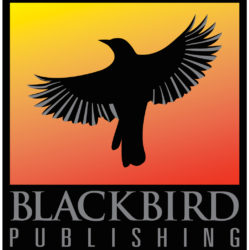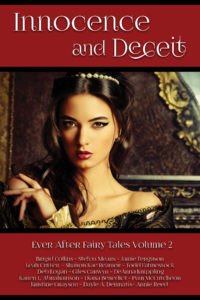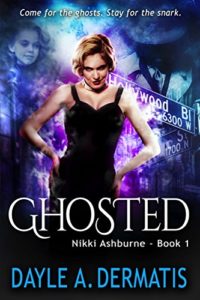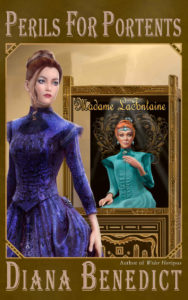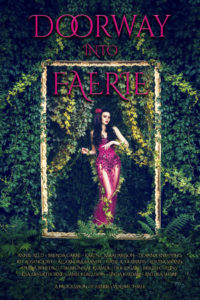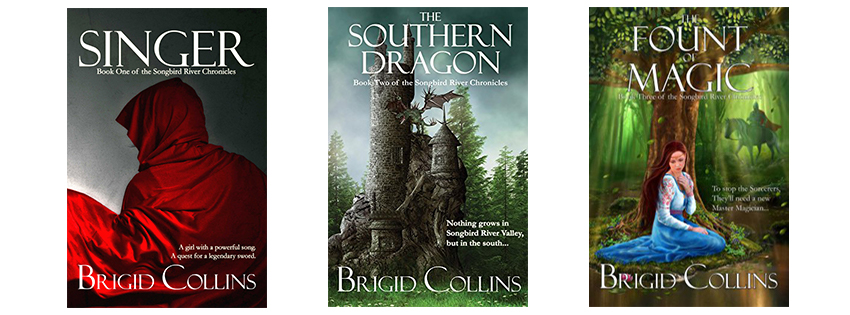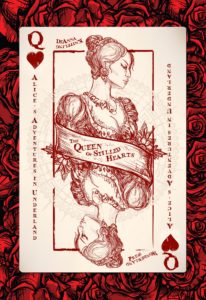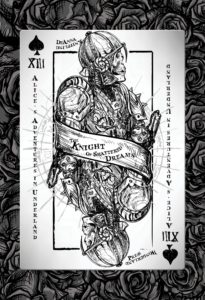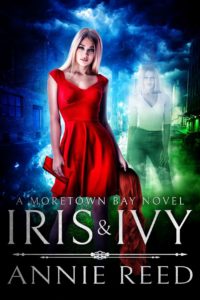“Inside a Fairy Tale” is in Innocence and Deceit, the second volume in the Ever After Fairy Tales anthology series.
Enter the magical, unpredictable, wonderful world of fairy tales!
Meet Jamie Ferguson!
Jamie writes fantasy, westerns, and whatever else pops into her head. She’s a member of the Uncollected Anthology, an urban and contemporary fantasy collective, co-edits the pulp monster series Amazing Monster Tales with DeAnna Knippling, and edits several anthology series on her own. Her superpowers are organizing and multi-tasking, both of which help her relate to her two border collies.
“Inside a Fairy Tale”
Valentina overhears a strange conversation between another couple in “Inside a Fairy Tale.” Filled with foreboding, Valentina follows them, and finds herself inside a modern-day fairy tale.
Excerpt
I took a deep breath and resumed walking toward Griffith’s car, rummaging around in my bag. I pulled out my phone, lip balm, an energy bar, a cotton scarf, a sleep-now charm wrapped in flannel, a packet of tissues, and a tube of sunscreen.
Finally, I found the Midsummer amulet my mother had made for me. She’d placed the herbs in a cotton bag and tied it closed with a strand of yarn she’d spun out of alpaca wool. I held the amulet close to my face, breathing in the scents of basil, rue, and rowan, and cast a find-me spell on it, whispering the familiar words. I finished the spell just as Griffith pulled out of the parking spot. I tossed the amulet into the back seat of his convertible, and then I turned and ran toward 6th Street, where my little blue Subaru was parked.
I didn’t know where Griffith was taking Brianna, but thanks to the amulet my mother had made for me, I could now follow them.
I reached my car and got in, saying the words to trigger the finding part of the spell I’d just cast as I turned my key in the ignition. A thin line of silvery light appeared in front of my car, invisible to anyone but me. I pulled out of my parking space and headed west, following the faint, sparkling thread that led to the amulet—and to Brianna and Griffith.
—from “Inside a Fairy Tale” by Jamie Ferguson
The Interview
Why did you choose to write a “twist” of “Sleeping Beauty?”
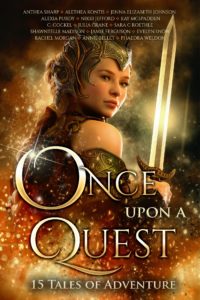 In early 2018 I wrote my first fairy tale retelling, “Magic and Machinery,” which appears in the Once Upon a Quest anthology. I based that story on the Brothers Grimm story “The Glass Coffin,” a German fairy tale which is a variant of Sleeping Beauty. When I went to write “Inside a Fairy Tale” I looked at several other fairy tales, but kept coming back to “The Glass Coffin” even though I’d already used it as the basis for one story. Finally I decided to assume my subconscious had its own reasons for this, even if I didn’t know what they were. 🙂
In early 2018 I wrote my first fairy tale retelling, “Magic and Machinery,” which appears in the Once Upon a Quest anthology. I based that story on the Brothers Grimm story “The Glass Coffin,” a German fairy tale which is a variant of Sleeping Beauty. When I went to write “Inside a Fairy Tale” I looked at several other fairy tales, but kept coming back to “The Glass Coffin” even though I’d already used it as the basis for one story. Finally I decided to assume my subconscious had its own reasons for this, even if I didn’t know what they were. 🙂
One of the main reasons I chose “The Glass Coffin” is because I wanted to work with a fairy tale that had a strong female character. Finding a story like that was a lot more work than I’d expected, which I found quite aggravating. The female character in “The Glass Coffin” is actually a very strong character—I suspect that this story was originally her story, and that the tailor who rescues her was added to it later. He doesn’t do anything of significance in the story other than open the coffin and have the maiden thank him and, within minutes, announce that she’ll marry him as his reward. The maiden, on the other hand had a whole backstory about her parents and brother, and she bravely fought off the evil wizard’s advances before being jammed into the coffin. I get immensely annoyed by stories where the man gets the woman’s hand in marriage when he didn’t do anything other than show up. So I decided to take this story and make it the woman’s tale in both “Magic and Machinery” and “Inside a Fairy Tale.”
You often write about witches or other beings with magical powers. What is it about you that makes you so interested in magic? And how do you decide what “magical” elements your characters use?
I’ve enjoyed reading stories with fantastical elements since I was a kid, so I think I just ended up writing stories that involve magic because I like reading them. I usually base what I write off of traditional mythology, but with my fantasy stories I have the freedom to make things up as well, which is really fun.
I’ve found myself reusing the same types of magic in multiple stories. In my novel Entangled by Midsummer, there’s a witch who incorporates herbs and flowers and other natural things into her magic.
I really enjoyed writing the magical scenes, and found myself using a similar approach in an unrelated story. And then I thought: maybe the two stories are related after all? Since then I’ve intentionally used the same approach to magic in a number of different stories, knowing these stories are actually related—even if the readers don’t. It’s been really fun to build on what I’ve created with each one.
The original story had both a traditionally heterosexual hero and heroine. What inspired you to change the lovers to be two women?
This goes back to my annoyance at the chauvinistic aspect of “The Glass Coffin.” I wanted Valentina, the protagonist in “Inside a Fairy Tale,” to be a strong female character, and I decided to go one step further by making her love interest a woman instead of a man. 🙂 In this story, both women are strong characters, which I very much enjoyed writing.
This story is set in a place very much like Boulder, Colorado, where you live. Is there something magical that you sense in Boulder that might make it a likely place for other magical beings to live in?
The story is actually set in Boulder. The opening scene, where Valentina is standing on the rooftop patio of a local restaurant looking at the mountains, is based on an actual patio I stood on last summer. 🙂
I don’t know if magic is real or not—if it is, I can’t sense it, either in Boulder or anywhere else. But I like the idea of magic, and I love living in Boulder, so it was fun to combine the two.
Do you have any plans to write more about Valentina and Brianna or Griffith?
I’m planning on writing a cozy witch series of novels that’s set in Boulder, and while writing “Inside a Fairy Tale” I seriously considered using Valentina as the protagonist for that series. I had five solid ideas and, after reviewing them to see how well they’d work for a series, decided I’d wrapped up Valentina and Brianna’s story, so I took them off the list. I could have written more with them, but I want to have a romantic element to the cozy series, and I didn’t want to complicate Valentina’s love life. 🙂 I am considering having Valentina make a cameo appearance in the series, though, and have even mapped out the scene in my head. We’ll see what happens when I get to that project!
Are there any other fairy tales that you’re thinking about retelling, reimagining, or reinventing? Or would you write another variation on the theme?
I’ll write at least one more this year for a new anthology which requires one of the main characters to be a queen. I don’t have the fairy tale I’ll base it on picked out yet, but guarantee that my queen will be a strong woman—regardless of how strong the queen is in the original fairy tale. 🙂
What story (or stories) are you working on now, and what’s fun about what you’re writing?
I’m working on revisions for my next novel, a fantasy involving a selkie, faeries, and magic. It’s fun because I really love this story, and I’m excited about finally finishing it. Like many of my novels, it started off as a short story that kept not ending. 🙂 I’ve written five or six short stories in the same universe, and have more books planned as well. I’ve really enjoyed creating exploring this world, and can’t wait to see what I end up writing in it next!
About Jamie
Jamie focuses on getting into the minds and hearts of her characters, whether she’s writing about a saloon girl in the American West, a man who discovers the barista he’s in love with is a naiad, or a ghost who haunts the house she was killed in—even though that house no longer exists. Jamie lives in Colorado, and spends her free time in a futile quest to wear out her two border collies since she hasn’t given in and gotten them their own herd of sheep.
Find Jamie
Website ~ Facebook ~ Instagram ~ Pinterest ~ BookBub ~ Amazon ~ Twitter ~ Goodreads
Find Innocence and Deceit!
Amazon ~ Barnes & Noble ~ Kobo ~ Apple Books ~ Books2Read ~ Goodreads

